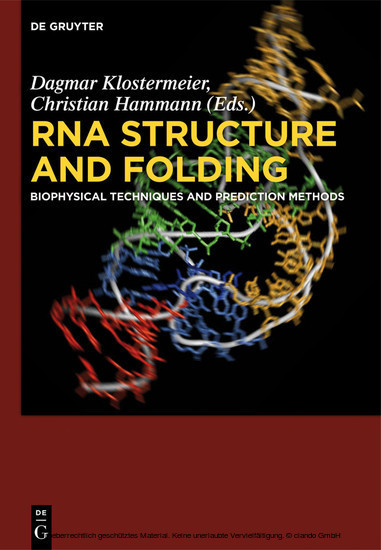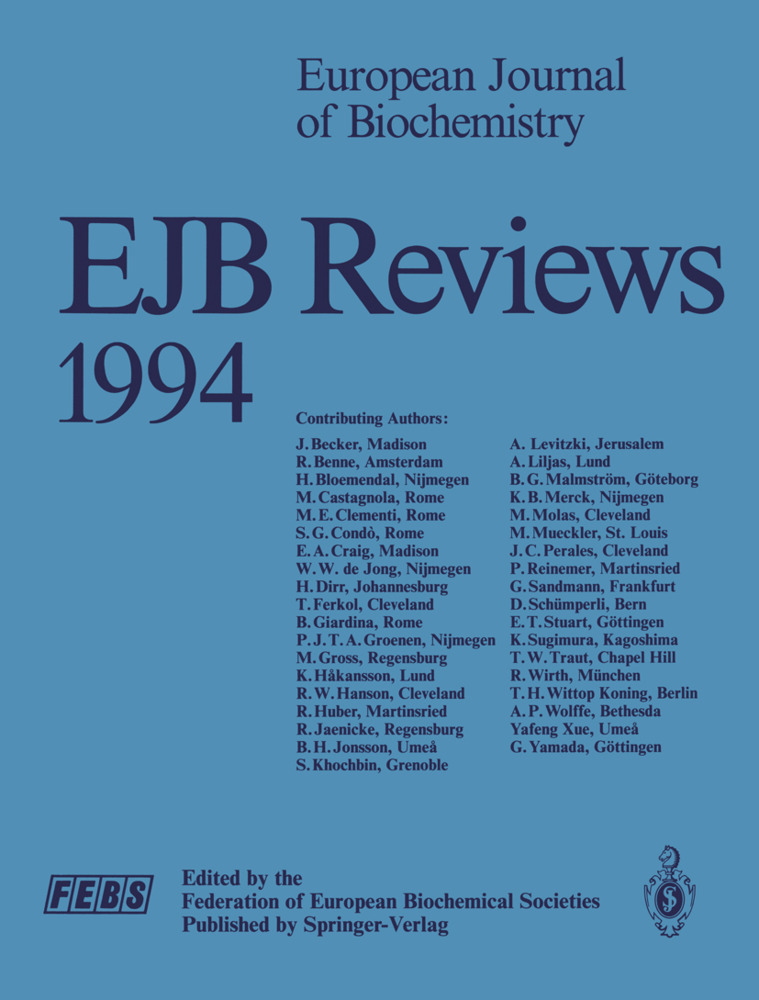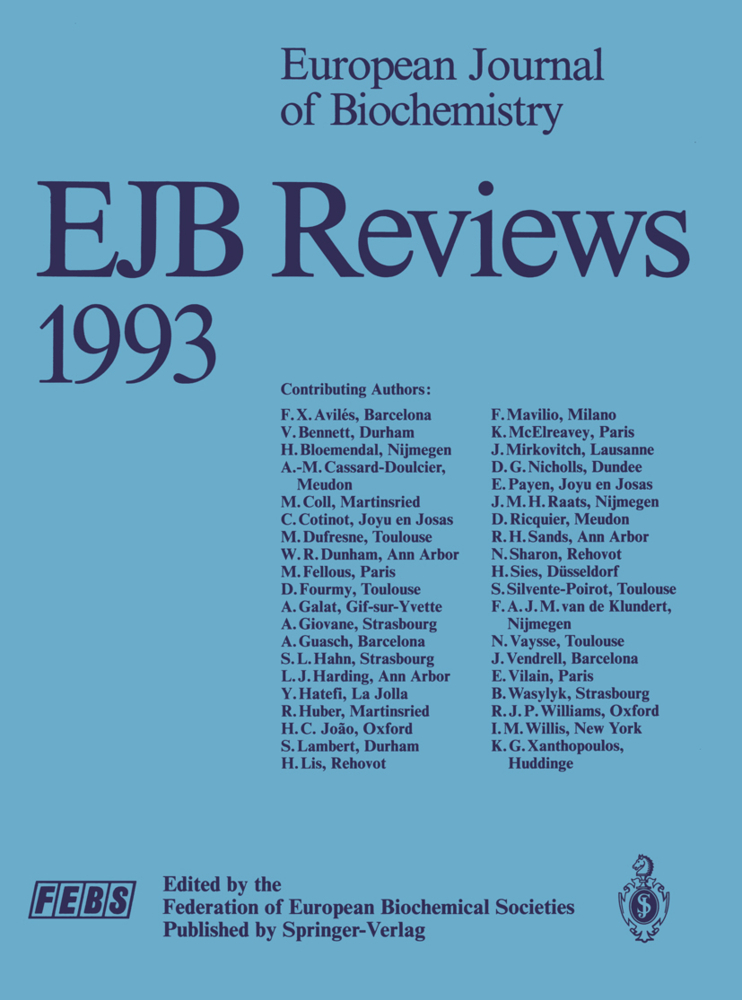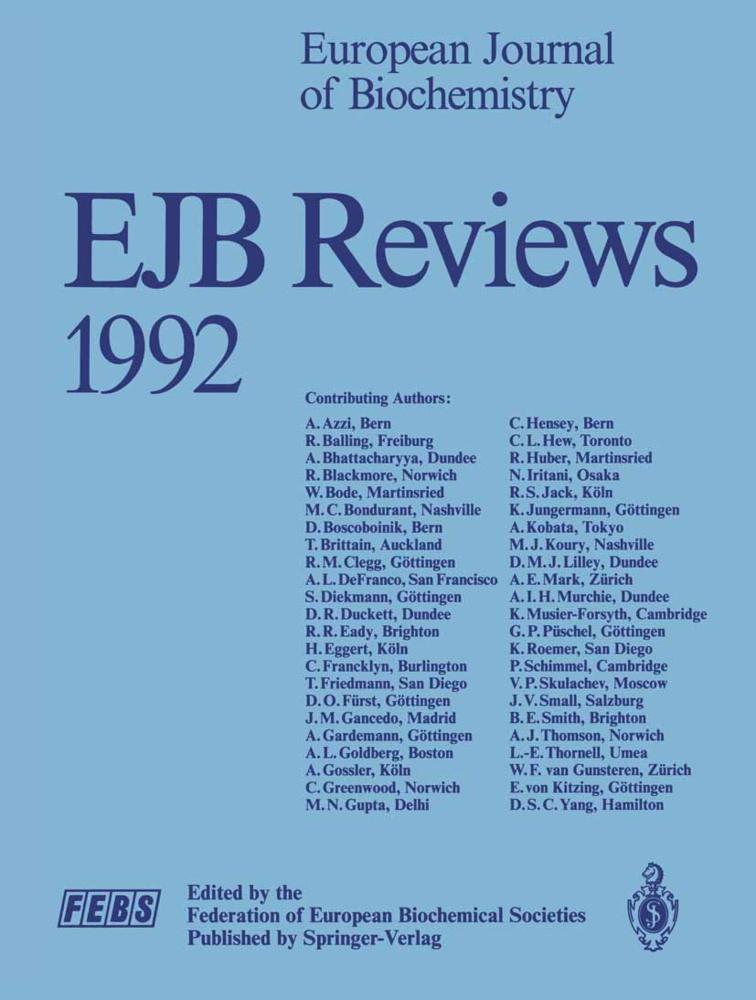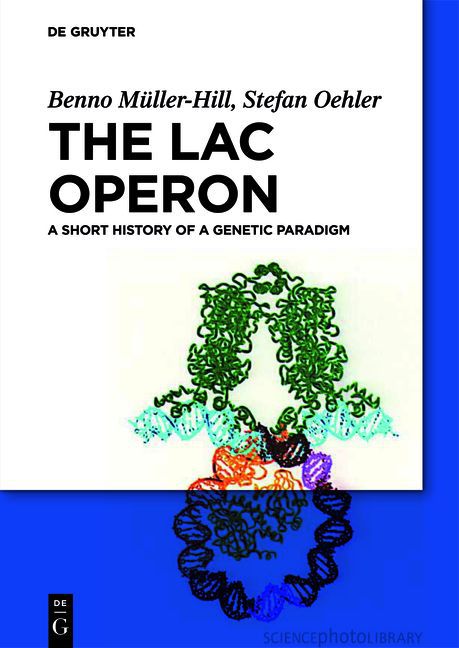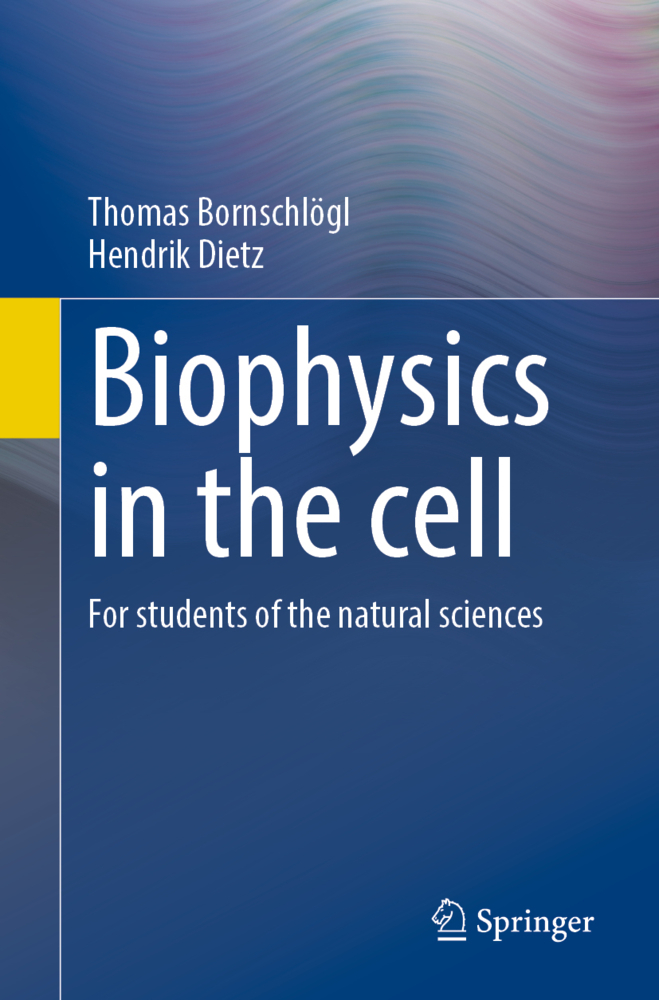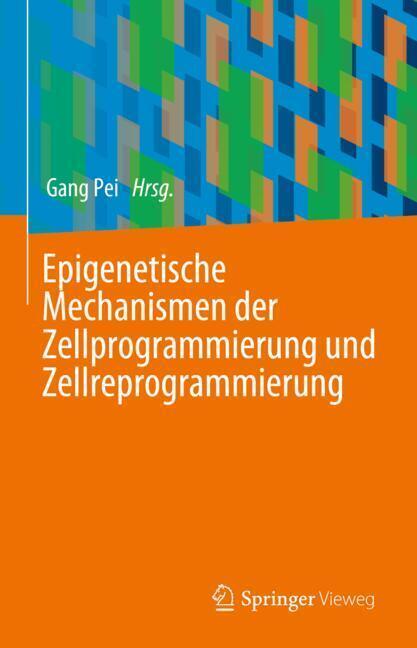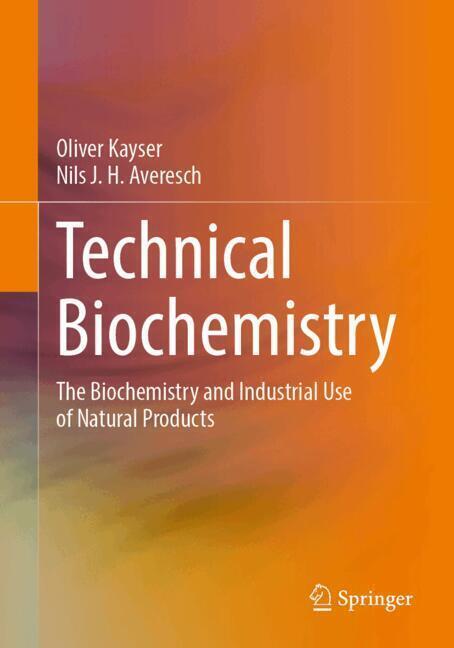RNA Structure and Folding
Biophysical Techniques and Prediction Methods
While structure-function relationships of proteins have been studied for a long time, structural studies of RNA face additional challenges. Nevertheless, with the continuous discovery of novel RNA molecules with key cellular functions and of novel pathways and interaction networks, the need for structural information of RNA is still increasing. This volume provides an introduction into techniques to assess structure and folding of RNA. Each chapter explains the theoretical background of one technique, and illustrates possibilities and limitations in selected application examples.
Dagmar Klostermeier, University of Münster, Germany; Christian Hammann, School of Engineering and Science, Jacobs University Bremen, Germany.
1;Preface;5 2;List of contributing authors;7 3;Contents;13 4;1 Optical spectroscopy and calorimetry;23 4.1;1.1 Introduction;23 4.2;1.2 Absorption spectroscopy;23 4.3;1.3 Fluorescence;30 4.4;1.4 Circular dichroism;30 4.5;1.5 Transient electric birefringence;35 4.6;1.6 Calorimetry;39 4.6.1;1.6.1 Isothermal titration calorimetry;40 4.6.2;1.6.2 Differential scanning calorimetry;43 4.7;1.7 Acknowledgments;46 4.7.1;References;46 5;2 Footprinting methods for mapping RNA-protein and RNA-RNA interactions;51 5.1;2.1 Introduction;51 5.2;2.2 Principles and applications of footprinting;52 5.3;2.3 Tools for footprinting: what should we know about probes?;54 5.3.1;2.3.1 RNases;54 5.3.2;2.3.2 Chemicals;57 5.3.2.1;2.3.2.1 Base-specific reagents;57 5.3.2.2;2.3.2.2 Ribose-phosphate backbone-specific reagents;57 5.4;2.4 Examples of RNP or RNA-RNA complexes analyzed by footprinting;59 5.4.1;2.4.1 Determination of the mRNA-binding site of Crc by SHAPE footprinting;59 5.4.2;2.4.2 Footprinting mapping of sRNA-mRNA interaction;61 5.4.3;2.4.3 Footprinting reveals mimicry of mRNA and tRNA for regulation;63 5.4.4;2.4.4 Difficulties in probing transient interactions by footprinting: the case of ribosomal protein S1-RNA complex;65 5.5;2.5 Concluding remarks;67 5.6;2.6 Acknowledgments;68 5.6.1;References;68 6;3 Chemical approaches to the structural investigation of RNA in solution;73 6.1;3.1 Introduction;73 6.2;3.2 Similar chemistry in different concepts: sequencing, probing, and interference;74 6.3;3.3 Sequencing and probing by Maxam and Gilbert chemistry;75 6.4;3.4 Application of Sanger sequencing to probing;79 6.5;3.5 Further electrophilic small molecule probes;80 6.6;3.6 Probing agents with nuclease activity;81 6.7;3.7 Probing agents involving radical chemistry;83 6.8;3.8 Matching suitable probes to structural features;83 6.9;3.9 Chemical modification interference;84 6.10;3.10 Nucleotide analog interference mapping;85 6.11;3.11 Combination and interplay with other methods;87 6.12;3.12 Application to an artificial ribozyme;88 6.13;3.13 Conclusion and outlook;91 6.13.1;References;91 7;4 Bioorthogonal modifications and cycloaddition reactions for RNA chemical biology;97 7.1;4.1 Introduction;97 7.2;4.2 Bioorthogonal conjugation strategies;98 7.2.1;4.2.1 1,3-dipolar cycloaddition reactions ([3+2] cycloaddition);98 7.2.1.1;4.2.1.1 Copper-catalyzed azide-alkyne cycloaddition;98 7.2.1.2;4.2.1.2 Strain-promoted azide-alkyne cycloaddition;99 7.2.1.3;4.2.1.3 Nitrile oxides as 1,3-dipoles for metal-free cycloadditions;100 7.2.1.4;4.2.1.4 Photoactivated 1,3-dipolar cycloadditions;102 7.2.2;4.2.2 Inverse electron demand Diels-Alder reaction ([4+2] cycloaddition);102 7.2.3;4.2.3 Staudinger reaction of azides and phosphines;103 7.3;4.3 Synthetic strategies for RNA functionalization: installation of reactive groups for cycloadditions;103 7.3.1;4.3.1 Chemical synthesis of modified RNA;104 7.3.1.1;4.3.1.1 Alkyne-containing phosphoramidites for solid-phase synthesis;104 7.3.1.2;4.3.1.2 Solid-phase synthesis of azide-containing RNA;105 7.3.1.3;4.3.1.3 Postsynthetic modification of RNA with azides and alkynes;105 7.3.1.4;4.3.1.4 Functionality transfer reaction using s6G-modified DNA;106 7.3.2;4.3.2 Enzymatic incorporation of functional groups for click chemistry;107 7.3.2.1;4.3.2.1 In vitro transcription using modified nucleotides;108 7.3.2.2;4.3.2.2 Enzymatic posttranscriptional modification;108 7.4;4.4 Case studies for applications of click chemistry in RNA chemical biology;110 7.4.1;4.4.1 Synthesis of chemically modified ribozymes;110 7.4.2;4.4.2 Monitoring RNA synthesis and turnover by metabolic labeling and click chemistry;112 7.4.3;4.4.3 Bioorthogonal modification of siRNAs for detection, improved stability, and delivery;113 7.5;4.5 Summary and conclusions;115 7.6;4.6 Acknowledgments;115 7.6.1;References;116 8;5 Analysis of RNA conformation using comparative gel electrophoresis;123 8.1;5.1 The principle behind the analysis of the structure of branched nucleic acids by
Klostermeier, Dagmar
Hammann, Christian
| ISBN | 9783110284959 |
|---|---|
| Artikelnummer | 9783110284959 |
| Medientyp | E-Book - PDF |
| Copyrightjahr | 2013 |
| Verlag | Walter de Gruyter GmbH & Co.KG |
| Umfang | 430 Seiten |
| Sprache | Englisch |
| Kopierschutz | Digitales Wasserzeichen |

